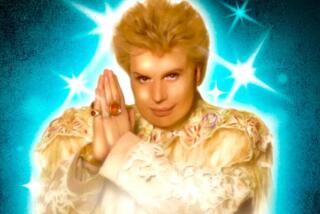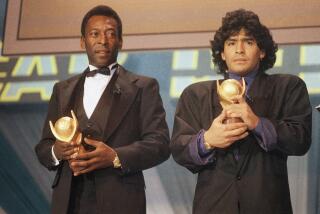The life of soccer great Diego Maradona was fit for the tabloids. So is his death
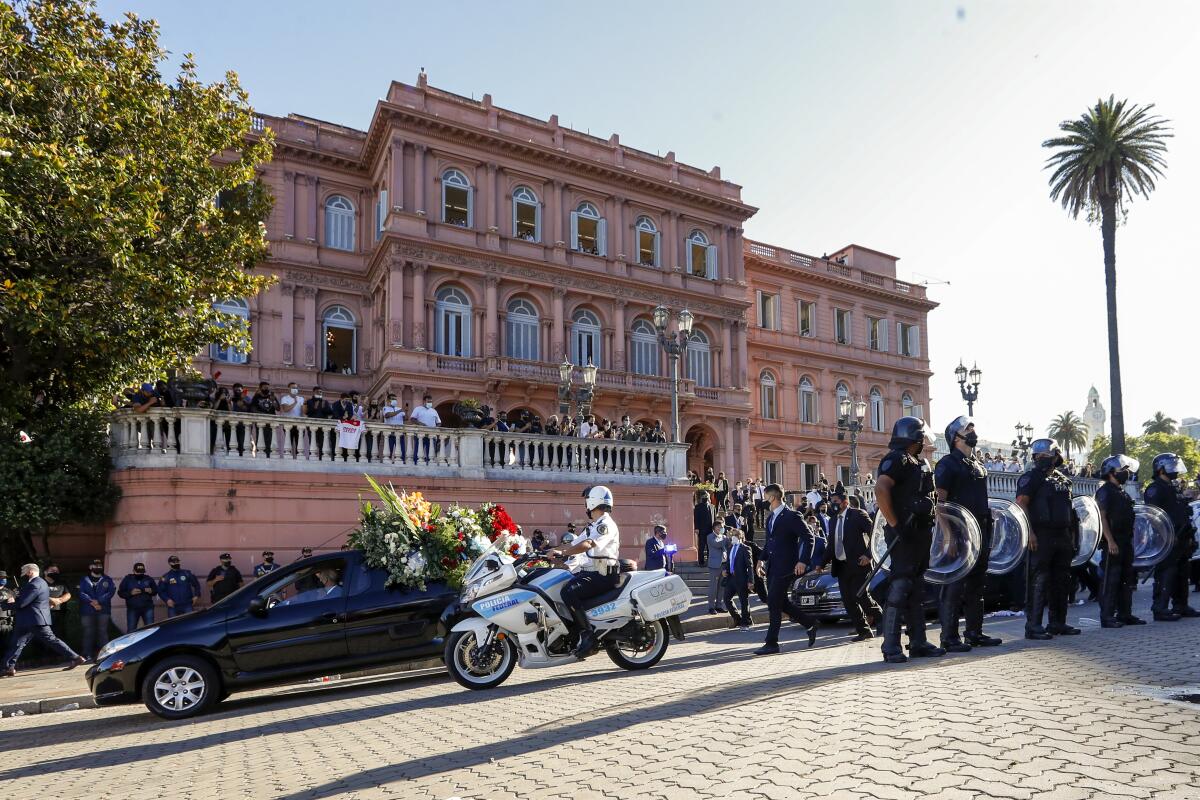
- Share via
BUENOS AIRES — Diego Armando Maradona, the most transcendent soccer player of his generation, perhaps of all time, lived a chaotic, tabloid-ready life.
He fought drug and alcohol addiction, depression, obesity and paternity claims while struggling to find his place once his playing magic escaped him.
His death has been just as messy.
News that Maradona had succumbed to apparent heart failure last week at age 60 — three weeks after surgery to relieve swelling in his brain — sparked an outpouring of grief around the world. Here in his native Argentina, tens of thousands of distraught mourners bid farewell at the presidential palace, where his coffin lay in state for 16 hours.
No sooner was Maradona buried — a day after his Nov. 25 death — than prosecutors, family members, ex-associates and eventually the public began raising questions about his medical care.

A preliminary autopsy concluded that Maradona died in his sleep of acute pulmonary edema, a buildup of fluid in the lungs, because of congestive heart failure. Experts said that years of well-documented drug and alcohol abuse probably contributed.
But according to multiple news reports here citing inside sources, Argentine authorities are investigating whether medical negligence played a part.
A local prosecutor’s office has seized medical records from Maradona’s ex-physician, raided the home of the player’s former psychiatrist and questioned relatives who have sounded alarms about his medical treatment.
Maradona’s three adult daughters reportedly told prosecutors that their father appeared “swollen,” especially in his stomach and eyelids.
A lawyer for an ex-girlfriend — Verónica Ojeda, mother of Maradona’s 7-year-old son — told reporters that “they let Diego die,” referring to Maradona’s caretakers.
Meantime, his longtime legal counsel, Matias Morla, charged on Twitter that the ambulance that responded the day of his death took more than half an hour to arrive — demanding an inquiry into what he called “criminal idiocy.”
The onetime greatest player on Earth spent his final days in relative isolation at a rented home in a gated community of Tigre, north of Buenos Aires. The full-time staff at the house included a nurse, a cook and a personal assistant. A nephew also lived there.

Medical personnel would come and go. On some days, Maradona never left his room. He was known to be difficult with doctors and nurses, often refusing simple requests such as submitting to blood-pressure readings.
No charges have been filed and no arrests have been reported.
But each new development in the case has been chronicled feverishly in a press keen for content on the charismatic midfielder who led Argentina to the 1986 World Cup championship at the Estadio Azteca in Mexico City.
A generation later, many still recall his two goals during the quarterfinal 2-1 defeat of England — just four years after Britain humiliated Argentina in the Falklands War.
The first was the so-called Hand of God goal, punched in by Maradona in a feat of street-smart moxie that eluded the referees. The second featured Maradona juking and weaving past numerous English defenders, somehow maintaining control, before depositing the ball into the back of the net. It was soon dubbed “the Goal of the Century.”
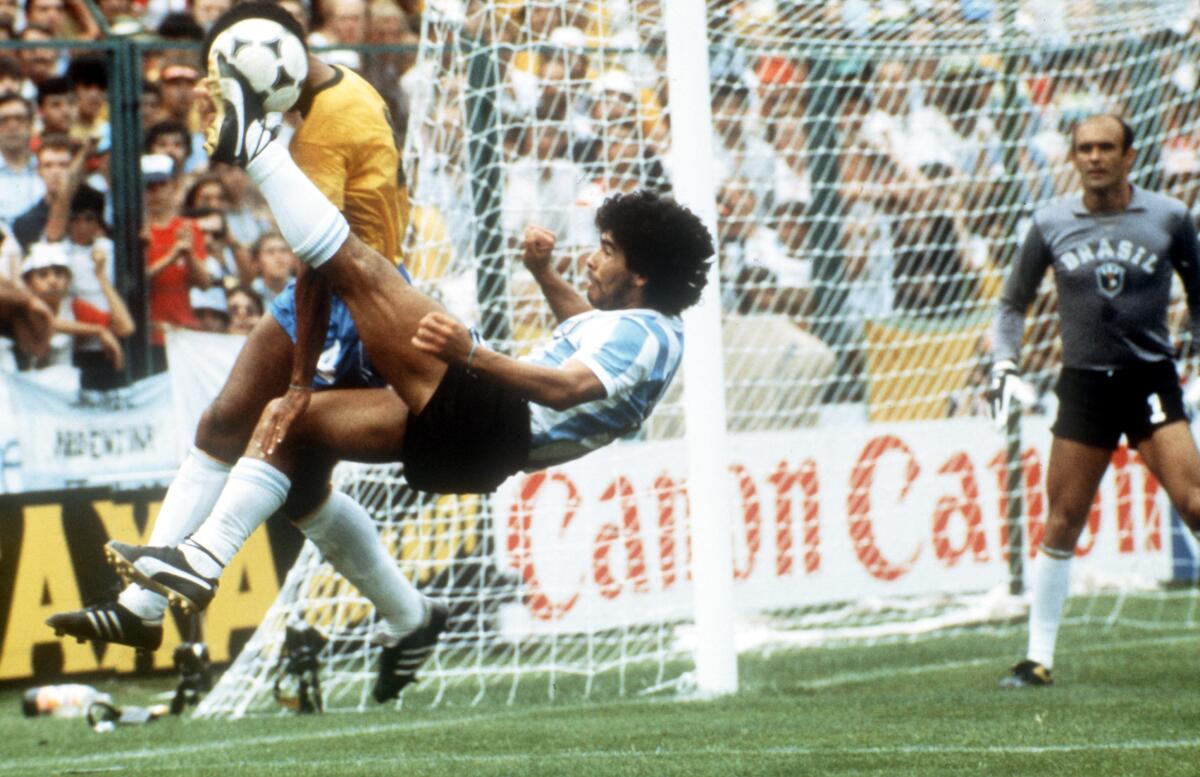
Whatever his personal shortcomings, El Diego has remained one of Argentina’s iconic and beloved figures, along with Eva Perón and Ernesto “Che” Guevara.
Reared in extreme poverty in the Villa Fiorito shantytown on the outskirts of Buenos Aires, he was an otherworldly talent who made his professional debut with the Argentinos Juniors team at age 15. He went on to play for the signature Boca Juniors squad, winning a national championship there before leaving for a tumultuous career in Europe.
At his peak, he revived the Napoli team, leading it to two Italian League championships. An idol to boys around the world, he was a stunning flash of light.
But he quickly fell from grace in 1991 after he tested positive for cocaine and was suspended from play for more than a year.
Maradona’s final World Cup appearance was in 1994 in the United States, but he was removed following two matches after testing positive for ephedrine, a stimulant, and later received a 15-month ban.
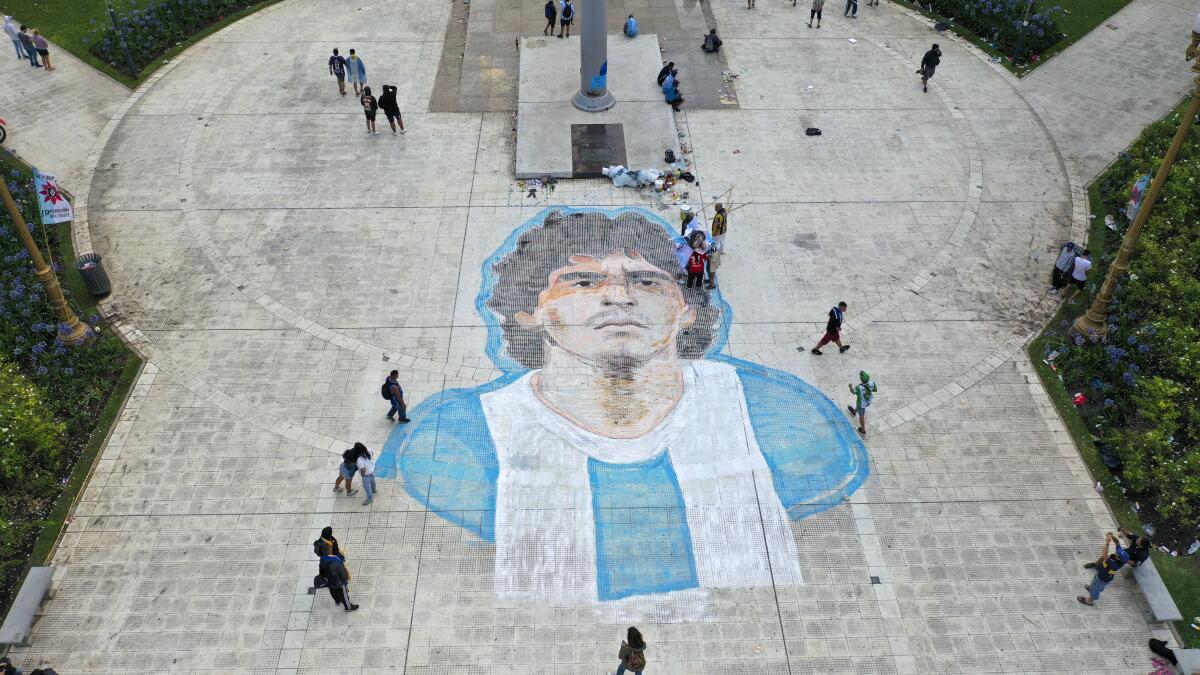
His life after his playing days was turbulent, though he always remained in the limelight. Various hospitalizations meant to control his addictions and ballooning weight made headlines in his homeland, as did his birthday parties, stories about his children born out of wedlock — most anything Maradona was grist for the media.
He embraced left-wing politics and its Latin American leaders, appearing with Hugo Chávez of Venezuela and Fidel Castro of Cuba, where he lived for several years.
His extensive body art featured tattoo likenesses of both Castro and “El Che,” along with the names of three of his daughters, a grandson and an ex-girlfriend.
He didn’t sparkle in a series of coaching gigs. His direction of the 2010 Argentine team — featuring young superstar Lionel Messi, viewed by some as Maradona’s heir — was widely considered a debacle. He fared better as coach of the Sinaloa Dorados, a second-division team in Mexico, but he was hobbled by knee trouble and other health issues and resigned in 2019 after two seasons.
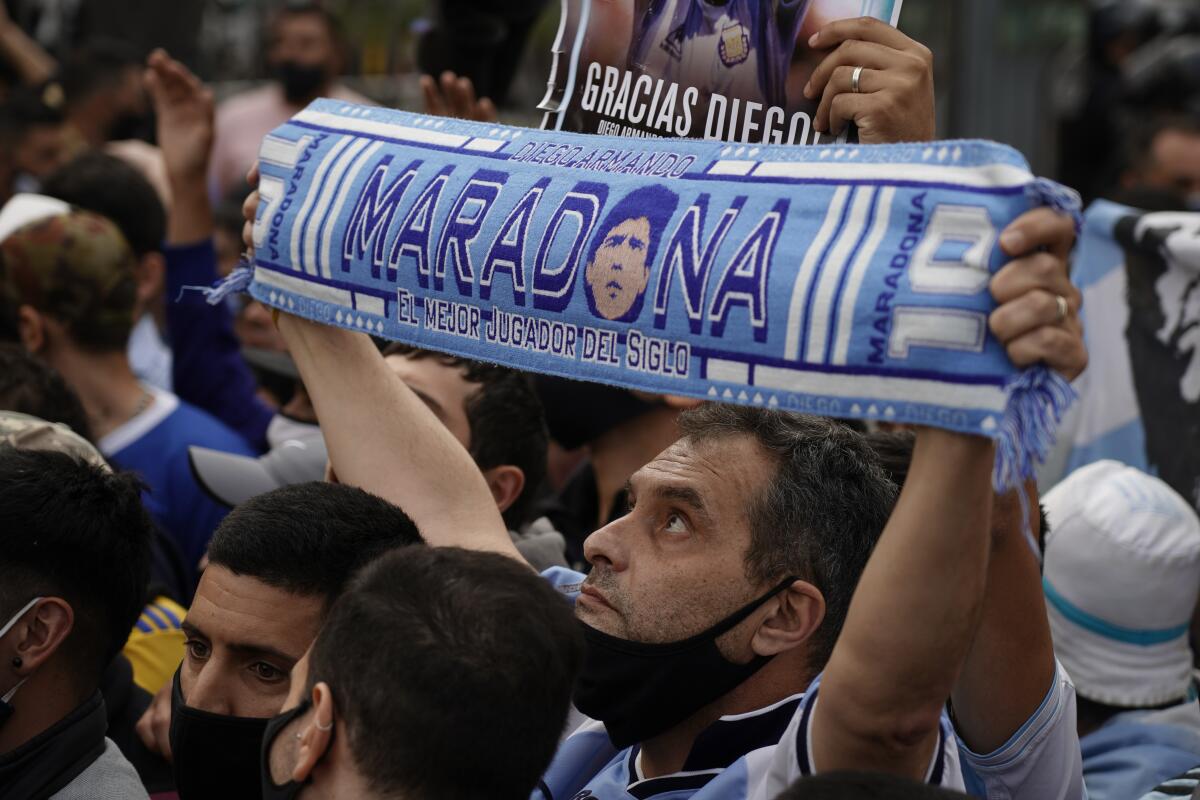
Speculation is already raging about who will inherit the considerable wealth of a figure who acknowledged five children by various women but leaves behind half a dozen or so potential descendants with paternity claims.
Previous reports of Maradona being near death in recent years sent legions of distressed fans into the streets of Buenos Aires. Now that Número 10 — as he was known for his immortal soccer number — is gone, the spotlight that he treasured has continued to shine.
“Maradona’s death appeared to be the end of the story,” noted a commentary Sunday in the Argentine daily Clarín. “But the story has only begun. Because the death of Maradona cannot be compared to the death of practically any other mortal.”
A police raid Tuesday on the office and home of Dr. Agustina Cosachov turned up records showing the psychiatrist had prescribed Maradona an assortment of potent pharmaceuticals — various antidepressants, plus drugs for opiate intoxication, bipolar disorder and other conditions.
A lawyer for the psychiatrist said the doctor had provided appropriate medical care to Maradona.
Still pending are toxicology results from the autopsy. Those tests should show whether Maradona had any drugs, alcohol or other potentially harmful substances in his system at the time of his death.
But the volume of prescriptions raised questions about whether the potentially hazardous cocktail of drugs had played any part in his recently deteriorating health.
“Maradona was a very complex patient, he had to be handled very delicately, almost like a chess piece,” Nelson Castro, a journalist with a medical degree, told Argentine television. “One had to balance every suggestion and medication that he was given so as not to produce collateral effects that could be harmful.”
Considerable public scrutiny has fallen on Dr. Leopoldo Luque, a neurologist and Maradona’s longtime personal physician. It was Luque who operated on Maradona for a subdural hematoma, a pooling of blood outside the brain.
Such bleeding is often associated with severe head injuries, though officials have not said whether Maradona had suffered such a trauma.
Prosecutors searched Luque’s home and office Sunday, carting off records.
Luque, sometimes weeping, later assured reporters at his home that there was “no medical error” in Maradona’s treatment. His death, the doctor said, had nothing to do with the brain surgery.
Luque said that Maradona was “very sad” in his final days, bemoaning the deaths of his parents in the last decade, and wanted to be alone.
“I don’t see that anyone, in any way, is guilty” for Maradona’s death, Luque said. “I believe that Diego abandoned the fight.”
Luque told the press that although Maradona “hated doctors,” caretakers properly regulated his medications and made sure that he didn’t drink alcohol.
“I did the best I could for Diego,” he said. “Diego was tired. He was tired of being Maradona.”
Staff Writer McDonnell reported from Boston and special correspondent D’Alessandro from Buenos Aires. Special correspondent Cecilia Sánchez in Mexico City contributed to this report.
More to Read
Sign up for Essential California
The most important California stories and recommendations in your inbox every morning.
You may occasionally receive promotional content from the Los Angeles Times.
